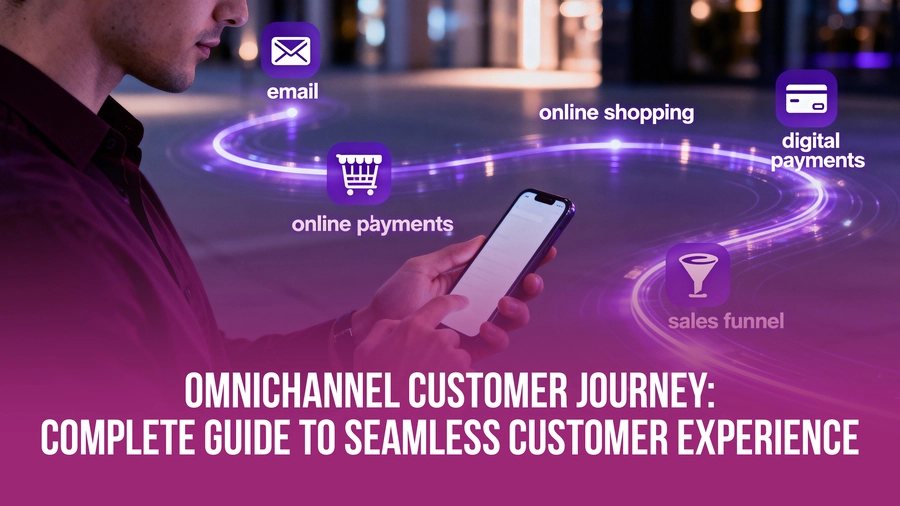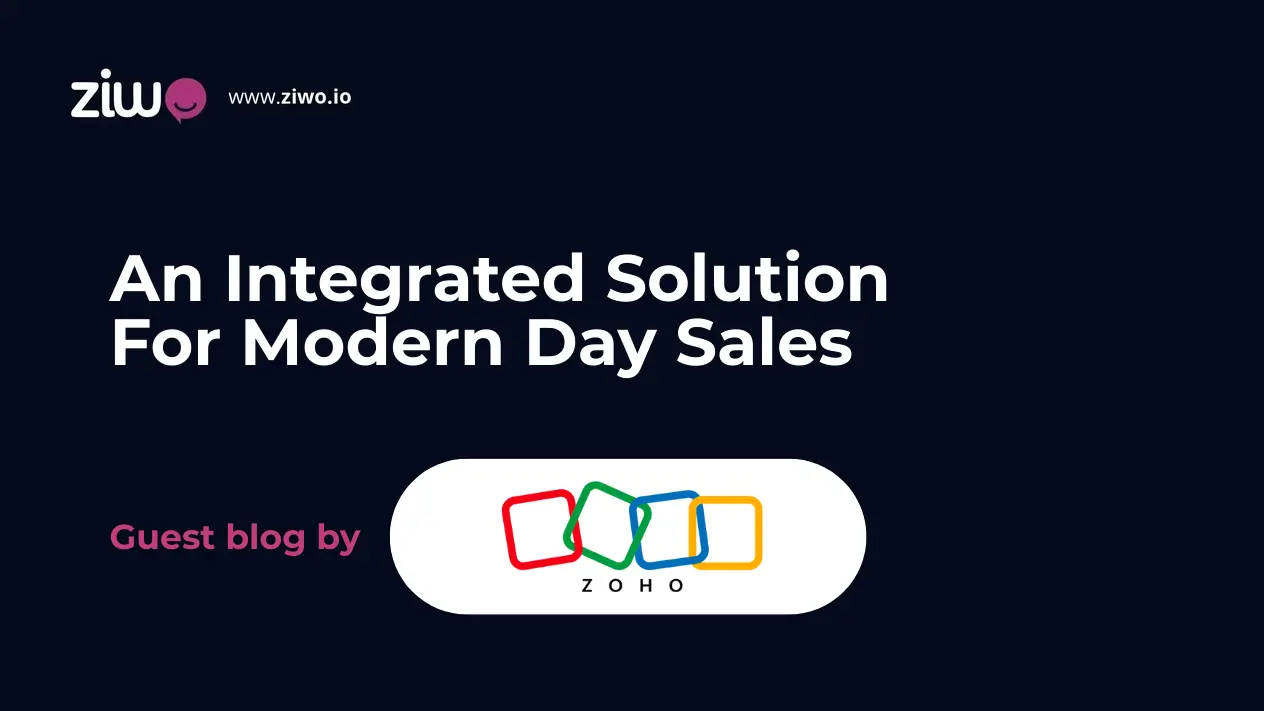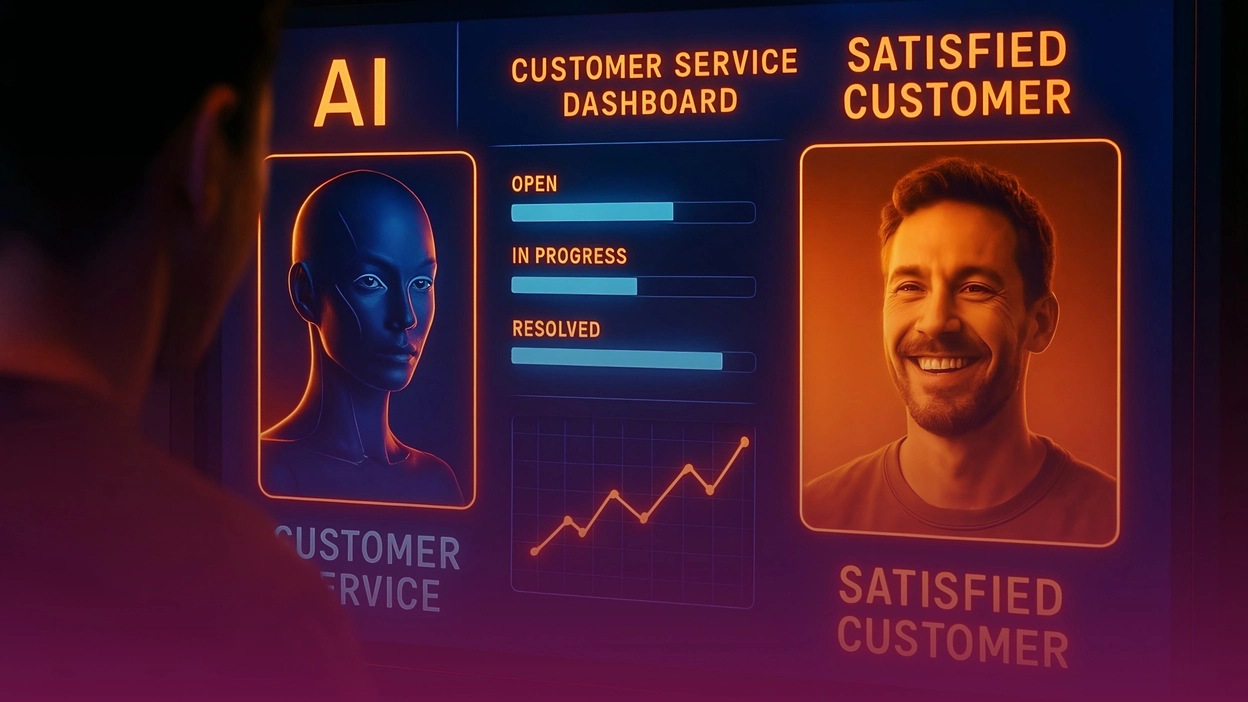The Voice of Customer (VoC)
What if the customer’s personality, preferences, and interests are not as you think? How will you know something like that? One single concept could be a code breaker: The Voice of Customer!
A customer’s journey is a path that you design and determine its stages based on how you comprehend them. During this journey, touchpoints represent the intersection points between the customer and your business.
Every touchpoint is a checkpoint that enables you to recognize if the company’s offers and services meet the customers’ expectations. You can examine the following points:
- Does the brand image appear as it should to your customer? Has he already formed an opinion?
- What’s your customer’s impression when he views your brand or any of its offerings at a touchpoint?
- What are the elements that the customer considers when comparing to other competitors that provide similar services?
To find the best practices and tools for VoC processing, read the article. It will help you turn ideas into successful actions.
What Is the Voice of Customer VoC?
Voice of Customer definition is the strategy and the business concept that aims to collect customers’ feedback about a company. VoC also discusses the friction points that customers face while using a product or service. Additionally, it highlights the pain points that your business hasn’t yet developed solutions for.
VoC encompasses a diverse range of channels through which customers can express their opinions, assessments, feedback, suggestions, and recommendations. A customer may publish a review on the web via Google Business Reviews, forums, product review websites, social media platforms, and other online platforms.
The concept examines how customers develop their thoughts about the product and consider their suggestions for improvement. VoC considers how customers feel during their direct and indirect interactions with your business. It analyzes:
- How did the customer’s behavior and reactions unfold throughout the phone call or conversation with a contact center agent?
- How did the customer feel on visiting the company’s headquarters or the sales outlet?
- How was the customer’s interaction after making an online purchase?
- Does the customer’s impression vary from one touchpoint to another, or is it almost stable, “positive”?
You cannot collect the Voice of the Customer without the presence of the correct information technology resources. These IT resources enable you to gather the valuable data you need to hear from customers. You should plant three central values in every business element to achieve the expected effect:
- Every word the customer states is key!
- Every mood the customer experiences, whether positive or negative, is analyzed.
- Every thought the customer suggests to improve reaches the R&D department for consideration.
Benefits of Voice of Customer
The Voice of Customer is the unit that completes the business cycle. As the customer produces a piece of information, it returns back to him in the form of a new feature, feature update, or advanced solution.
The importance of the Voice of Customer stems from a lot of benefits, like:
- Interaction With Customer Touchpoints Before They Turn Into Crises: A touchpoint might include a kind of distress. When these problems build up from many touchpoints, it can be surprising when the customer decides to leave. So, the VoC of a touchpoint is an early alert that says this will lead to a later crisis.
- Decision Making Based on Data: Some businesses may discover that a bad decision they’ve made lately, after its consequences started to appear. Voice of Customer is a proactive technique that allows you to know the right decision that majority of targeted audience accepts.
- Successful Customer Expectations Management: The customer has their own expectations at every stage in the journey. When he notices that his expectations are fulfilled, the brand easily earns his satisfaction. Everyone is looking for a service provider who comprehends their expectations.
- Customer Satisfaction Improvement: Customizing solutions that suit customer needs, regardless of the targeted audience size, leads to better customer satisfaction rates.
- Customer Loyalty Retention: Customer loyalty is the organic result of their satisfaction. Loyalty appears in many situations:
- Repeating the purchase process.
- Posting positive feedback and spreading good vibes about your brand in his circle.
- Advocating for your company when someone attacks it or uses a competitor’s service.
- Creating New Competitive Advantages: Listening to the customer across every available channel is not a standard feature among businesses. It’s time to attract an unlimited number of customers by utilizing more effective VoC programs. The most influential research and advisory firm.
- Profit Increase: According to Forrester’s research, companies that prioritize the Voice of Customer achieve yearly profits that are approximately 41% higher than their previous revenue.
How to Set an Integrated Voice of Customer Process
Any integrated Voice of Customer program consists of three basic stages:
1- Listening
Your business doesn’t listen to the Voice of Customer by recording the data and storing it in your systems. Listening is not just hearing; it’s a focused process that details what the customer produces from data.
A better comprehension of data facilitates categorization, sorting, and grouping. To build a majority report from users’ opinions, thoughts, and emotions, all voices considering each element are accumulated in the same place.
The listening phase includes numerous steps:
A- Determine the Objective of the Voice of Customer Process
Like any other initiative at your business, before preparing it, you should recognize its objective. Do you seek more customer satisfaction? Customer churn reduction? Service/product development?
B- Review the Customer Persona and His Journey
When you understand the customer persona and the product that addresses its pain points, you can easily identify touchpoints that intersect with their journey.
C- Explore VoC Best Practices for Every Touchpoint
By identifying the touchpoints, you can detect the best means to collect data from the Voice of the Customer. The nature of the touchpoint drives you to apply specific methods.
D- Set the Questions That Lead to the Missing Data
Paying attention to the right questions guides you to the accurate answers. This leads you to the facts that matter to your ideal customers, and you need to establish your business upon them. Remember that there are two types of answers:
- Direct Answers: They’re answers that result from direct questions. You can utilize these answers to measure key performance indicators, CSAT, and other KPIs.
- Q/How was your experience with the courier?
A/ V.good
- Q/Assess the communication experience with the contact center from 1 to 5, where 1: weak, 2: acceptable, 3: good, 4: very good, 5: excellent)
A/ 4
- Indirect Answers: They're answers sourced from indirect questions, but represent key elements in the business.
- To understand this point, imagine you have a digital product, such as an ERP. As usage hours increase by the day, this indicates the size of your business. Through this rate, you can determine the best class of companies you can serve.
Imagine you have specific ranges:
- Less than 4 hours: small business
- From 4 hrs to 6 hrs: medium-sized business
- More than 6 hrs: large business
- You have 1000 subscribed users.
Q/ What is the percentage of users who use the system more than 6 hours?
A/The average number of users who use the system more than 6 hours is 600 users. In this case, the percentage of large enterprises is 60%, which makes it a majority.
E- Recognize the Best Time to Send a Message
The timing is as important as the question. The goal is not to send questions that customers won’t interact with. This depends on a trial-and-error experiment until you determine the best time. It’s easy to discover, as it’s the time when we get the highest rate of engagement.
2- Analysis
You cannot gather data and make a decision relying on it without analysis. Analytical tools help you produce metrics that refer to the facts that inform precise choices.
A- Determine Used Technology
Use advanced technology and cloud solutions to receive accurate analytics. You could use cloud contact center software, CRMs, ERPS, and other solutions. Additionally, you may develop in-house software that helps you reach accurate conclusions.
B- Recognize the Reasons for the Resulted Insights
Negative insights may occur during a specific season. The issues that may arise do not always refer to weaknesses that exist within your company. To check the reason for these undesirable patterns, you should ask the following questions:
- Have any negative results appeared at a similar time of the year?
- Have any similar results appeared at any time of the year in the past?
- How did the company process these insights if they had appeared before?
- Is this the first time these results have been reported when evaluating this business element?
3- Action
In this phase, the conclusions turn into decisions. These decisions can steer a process away from a wrong path or one that does not meet customer expectations.
In this phase, the VoC influences the business positively. The required change undergoes the following steps:
A- Distribute the Duties on Your Team
To achieve the goal of the action, you should specify the individuals and the teams in charge.
B- Consult Your Team
Your customer has a voice, and so does your employee. You should listen to your employee’s voice to receive his opinion and suggestions about the action in progress.
The cycle doesn’t end with the (Action), but goes back to the (Listening) phase to check the validity of the new action from the customer’s perspective.
Voice of the Customer Best Practices
Digital solutions and software tools have been revolutionizing the landscape of customer experience improvement. The analytics and advanced insights that the business software provides have become a cornerstone of the Voice of the Customer.
Also, artificial intelligence has become a common factor in all functions, including customer relationship management. The methods and techniques that help you collect and analyze the VoC, customers’ opinions, and interactions are as follows:
1- AI and Natural Language Processing (NLP)
Why do you need the customer to end the touchpoint when you can analyze their interaction while they are still occupying it? Impressive, right?
Several solutions apply this model. Your business can analyze the customer’s voice instantly while they’re communicating with the contact center. When you understand the customer’s needs and triggers, you can provide them with more effective assistance.
That’s why sentiment analysis tools have become part of call center software solutions. Sentiment analysis tools help you determine how customers interact with the data and how the agent processes their inquiries and issues.
Thanks to NLP and AI features in the contact center application, you can recognize:
- Verbal Expressions
- Tone of Voice
- Voice Pitch
2- Omnichannel Analytics
Omnichannel analytics is more related to contact center software solutions than social media marketing solutions. For example, ZIWO provides integrated communications that allow conversations about the same topic to be found in the same window, on phone calls, and WhatsApp.
This enables your business to gather data about the same touchpoint or business element from different channels to ensure it represents the majority. A 360-degree view of the customer's voice is easily achieved.
Additionally, there are customer feedback management (CFM) software solutions that you can integrate with other business software.
Ex.:
A customer purchased a product from your e-commerce store. After delivery, the customer receives an email in their inbox that includes an assessment survey to check the degree of compatibility with their expectations.
After a week, the customer support team calls the customer to measure their satisfaction and ensure whether they faced any issues while using the product.
It’s been a month since the purchase, and the customer receives a message via WhatsApp from your business as a verified contact. The message includes a link that directs the customer to a form where they can respond to questions. They describe their experience, including both the pros and cons.
After the customer interacts with the form, the comments are more positive, and he gets a link via SMS. It asks him to review the product on the website.
The whole cycle is built on an automated workflow. The customer progresses from one stage to another, guided by a prompt that leads to the next step.
3- Digital Analytics
What if you offer a digital product? Providing a mobile app, web app, device app that you can download on laptops and desktops, or other digital products? In this case, the system developer can define critical metrics to analyze and determine the system's efficiency.
The developers have set some predictions that they need to assess through insights. So, their dashboard displays;
- Average daily usage time of the system.
- Average number of users per day.
- The most used features throughout the month.
- Usage peak periods during the day.
- The geographic location of each user (If the system enables location detection).
- Age group, gender, job role, and other user basic information.
- The most common business fields using the system.
These insights are considered paths that lead to indirect Voice of Customer (VoC) feedback. The customer doesn’t express his opinion about the product. However, it tells us a lot about how he uses the product and his characteristics, which leads us to:
- The most benefited audience from the system.
- The geographic location (City/Country) of the most active users.
- The most used features and those most beneficial from the user’s perspective.
- The poor and useless features, as perceived by users.
This type of analytics can be utilized in marketing campaigns. This happens as your company has acquired more accurate information for seamless targeting. Now, your sponsored campaigns reach the audience that truly needs your product.
4- Online Reviews
It’s every feedback the customer leaves on your website, product review websites, or even Google Business Reviews. This represents the public Voice of the Customer. The public review has a double function.
It helps your business determine the policies, features, products, and other elements that customers need to be upgraded. Also, leads who haven’t made a purchase yet, always take a look before purchasing.
Additionally, social media posts that discuss the positive and negative aspects of the product serve as a guide for the business and its leads.
5- Polls and Feedback Survey Forms
The surveys and feedback forms vary. In the past, customers received a paper form after the service.
The services include offering dinner, hosting a tourist in a chalet, and other services. Gradually, every business has owned its app, whether it is a multi-branch store or a B2B company.
The app sends a notification that alerts the customer to fill out the form. During a phone call, the feedback survey could be an IVR, where the customer interacts with automatic, preset voice messages.
The interaction happens simply by pressing the keypad buttons. Also, many stores now provide bright screens for customers to interact with. This facilitates the gathering of customer voices at a physical touchpoint.
6- Interviews, Tests, and Free Trials
Interviews, tests, and free trials serve two purposes: marketing and a validation check from the targeted audience.
Therefore, you can target the geographic locations where your audience resides. Then, you can start conducting recorded interviews after taking the audience's permission.
What makes the interviewee part of the audience is:
- Using a competitor’s product
- Using this type of product in general (grooming, diet, skin care, hair care, patisserie, desserts, snacks, etc.)
- Having a pain point that your product solves.
This is a method of Voice of Customer that falls under the umbrella of marketing budget. The audience will get a free sample of the product to try. Offer the customer the product and ask him about:
- First impression
- What they like about the product and what makes it better than a competitor’s product.
- What they dislike about the product and what makes it worse than a competitor’s product
Voice of the Customer Survey Analysis
The Voice of Customer encompasses their thoughts, emotions, and opinions, as previously mentioned. Therefore, consider every touchpoint as a data resource.
Voice of the Customer Pre-analysis
Before you start analyzing the data you've collected, follow the next steps:
A- Determine the Touchpoint
B- Determine the audience classes that the touchpoint encompasses
C- Set standards that help you differentiate actual VoC from baseless opinions. That way, you can disregard feedback without proof.
*(Some voices might belong to competitors who aim to underevaluate your brand, to acquire your leads. Also, there are clueless supporting voices that come from friends, family, etc, who are your brand or team members.)
Voice of the Customer analysis at a touchpoint should include three significant phases:
- Before the touchpoint
- Through the touchpoint
- After the touchpoint
The ideal case is as follows:
- The customer lacks a certain value that negatively impacts his emotions. (Before the touchpoint)
- The customer gradually transforms from a negative status to a positive status. (through the touchpoint)
- The customer acquires a positive status after passing the touchpoint. (After the touchpoint)
The ideal case is not the common situation. In many cases, a prior touchpoint causes a negative impression that the customer carries to the next one.
Example: A customer received a product that has specifications that differ from their request. He contacted the call center. The customer service agent showed cooperation and resolved the problem. The customer’s complaint represents his voice at the touchpoint. It suggests that there are problems with shipping and warehouse management.
Voice of the Customer Analysis
Dividing the touchpoint into three partitions helps you analyze the VoC as it should be. When the it’s sectioned accurately, you can simply answer these questions:
- How to determine the customer’s current status? Feedback? How do you gather his thoughts?
Every touchpoint has its own methods for detecting customers’ emotions. Digital surveys, post-call surveys, paper forms, sentiment analysis tools within a contact center software, interactions on social media platforms, etc.
- How does the customer feel?
Anger, sorrow, disappointment, exhaustion, indolence, boredom, comfort, energy, calmness, or any other positive and negative emotions.
- Why does the customer have this feeling?
The pain point or friction point that the customer encounters is the reason for any negative status. On the other hand, the content, products, and services your business delivers should leave positive impressions.
- What opinion has the customer formed at the touchpoint?
Most customers/leads form their opinions after more than one interaction at several touchpoints.
- How does the customer think about developing a specific touchpoint every time he deals with your business?
It’s a thought that occurs to the customer when they interact with the touchpoint or are exposed to it. It comes in he form of a suggestion that says: “Why doesn’t the company do the x action, to make y in the business better?”
This division helps your business validate if the touchpoint has met its objectives or not. If the customer leaves the touchpoint with positive emotions, they will arrive at the next touchpoint with the same emotions. The same occurs if the customer carries negative emotions.
How to Encourage Customer Feedback
Your interest in collecting the Voice of the Customer cannot be overstated, in an era when customer experience design has become a continuous process. Every VoC campaign you launch has its challenges.
What if you prepared the VoC campaign, and the customers delivered no response? Follow the next instructions:
1. Customize the participation requests to consider the customer’s personality, preferences, and past purchases.
2- Make the questions direct and short, so that they don’t consume more than two minutes of a customer’s time.
3. React with the voice as quickly as possible to let the customer feel appreciated. Now, the customer can feel that he’s the business he’s looking for. He believes that he’s the best contributor and is responsible for every change that occurs in customer service.
4- Make the VoC program campaigns part of awareness marketing campaigns. So, you can represent your interaction with customers’ feedback and thoughts. Also, clarify how your business transformed them into services, updates, and products that benefit the customer.
5- Don’t let survey form filling be tied to a coupon or a gift. Some customers might feel offended. Other customers might record positive feedback. However, the truth is different in the two cases. This results in the survey losing its aim.
Conclusion
The Voice of the Customer VoC is not just a poll or a feedback survey link. It’s a path that transfers the words, thoughts, and moods of customers to the ears of the high board. Thus, all communication channels should be open to receive suggestions, complaints, and impressions at every touchpoint.
You should remove every obstacle that makes the customer's transfer slower or more difficult to access. Contact centers, websites, retail outlets, and any other physical or digital point of interaction are touchpoints from which you can gather Voice of Customer (VoC) insights.





